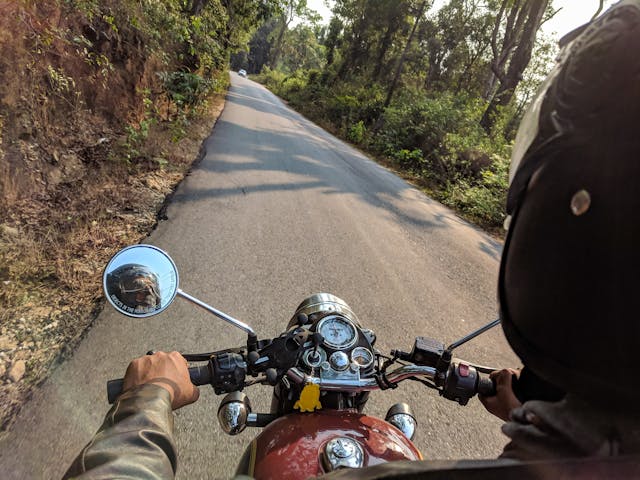Motorcycle riding is often more than a mode of transportation, it is a thrilling experience. While the activity is thrilling, it is also a dangerous practice, especially when paired with busy highways and high-traffic roads. If you are new to motorcycle riding or interested in starting, you may be wondering what the laws in Oklahoma say about wearing a helmet.
Oklahomas Helmet Laws
In the state of Oklahoma, helmet laws dictate who must wear helmets while operating or riding on motorcycles, mopeds, or motor-driven cycles. These laws primarily focus on age-related requirements. For riders aged 17 and under, wearing a helmet is mandatory. Any person under 18 operating or riding as a passenger on such vehicles must wear a helmet that meets the safety standards set by the U.S. Department of Transportation (DOT) or the Snell Memorial Foundation. Once individuals reach the age of 18, helmet usage becomes optional. However, riders must meet specific insurance requirements or complete an approved safety course by the Oklahoma Department of Public Safety to qualify for this exemption.
How Do Oklahoma’s Helmet Laws Compare To Other States?
When comparing Oklahoma’s helmet laws to those of other states, they fall into the middle when it comes to strictness. While Oklahoma mandates helmet usage for riders aged 17 and under, some states have universal helmet laws, requiring all riders, regardless of age, to wear helmets. States such as California, Georgia, and Maryland fall into this category. Conversely, there are states with no helmet laws whatsoever, where riders enjoy complete freedom of choice regarding helmet usage. States like Illinois, Iowa, and New Hampshire exemplify this approach, leaving the decision solely to individual discretion.
Risks of Not Wearing a Helmet
Opting not to wear a helmet while riding poses significant risks, regardless of legal requirements. Motorcycle accidents can be deadly or result in a variety of injuries. Motorcyclists without helmets are more susceptible to severe head injuries and fatalities in the event of accidents. Traumatic brain injuries, skull fractures, and concussions are just a few of the potential consequences of riding without proper head protection. The impact of an accident can result in lifelong disabilities or permanent impairments, profoundly affecting the quality of life for riders and their families. Medical expenses, rehabilitation costs, and lost wages further compound the consequences of not wearing a motorcycle helmet, underscoring the importance of prioritizing safety on the road.
Benefits of Wearing a Helmet
Conversely, wearing a helmet offers numerous benefits that extend beyond mere compliance with legal requirements. Helmets serve as a crucial safety measure, significantly reducing the risk of head injuries and fatalities in motorcycle accidents. The protective shell, impact-absorbing liner, and retention system of helmets work together to mitigate the force of impact during collisions, safeguarding riders’ heads from traumatic injuries.
Furthermore, helmets provide protection against environmental elements, such as wind, debris, and inclement weather, enhancing riders’ comfort and visibility on the road. The visor or face shield of a helmet shields the eyes from dust, insects, and UV rays, ensuring clear vision and preventing distractions while riding.
Additionally, helmets contribute to the overall sense of confidence and security for riders, allowing them to focus on the thrill of the ride without compromising their safety. By wearing helmets, motorcyclists demonstrate responsible behavior and respect for themselves and other road users, fostering a culture of safety and awareness within the riding community.
Ride Safely on Oklahoma’s Roads
While Oklahoma’s helmet laws grant riders aged 18 and older the option to forego helmets under certain conditions, the decision to wear protective headgear should not be taken lightly. Understanding the risks associated with riding without helmets and acknowledging the benefits of helmet usage can empower motorcyclists to make informed choices that prioritize their safety and well-being on the road. By embracing helmets as essential safety equipment and advocating for responsible riding practices, individuals can contribute to a safer and more enjoyable riding experience for everyone.




